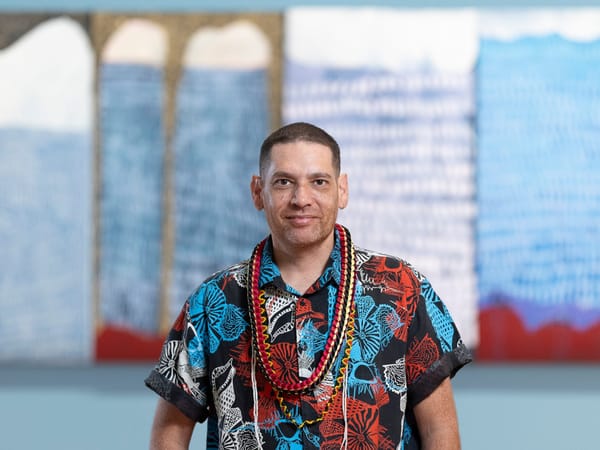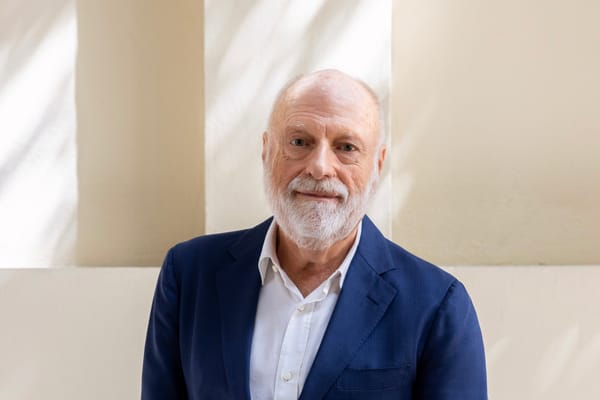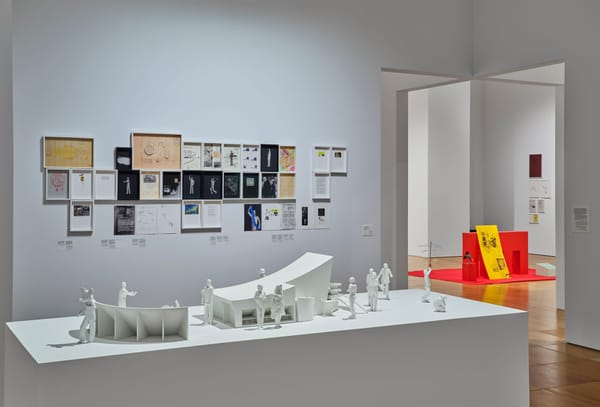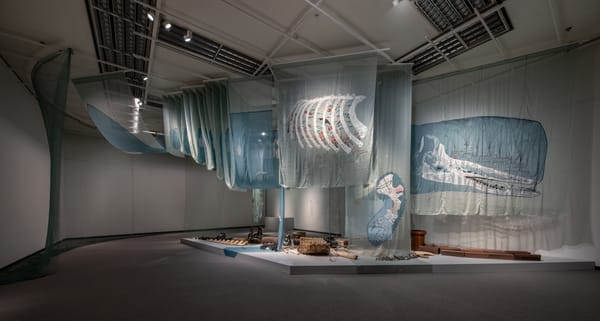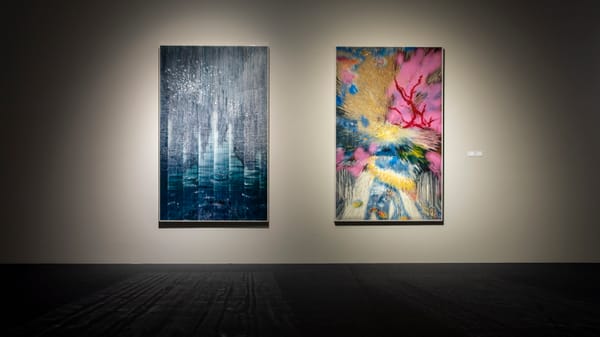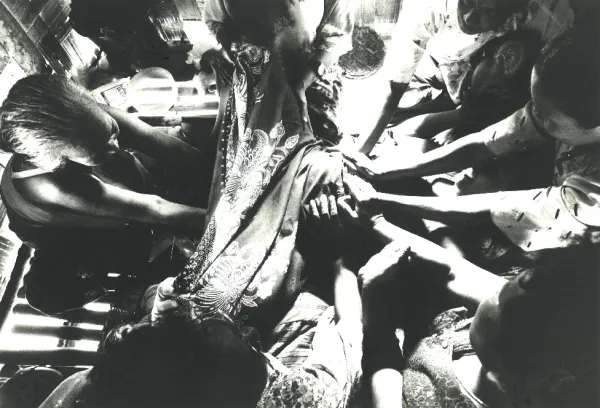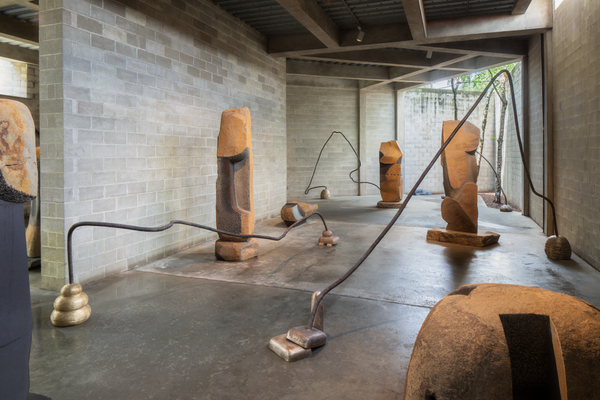Shows
Art Spaces In and Around Guangzhou
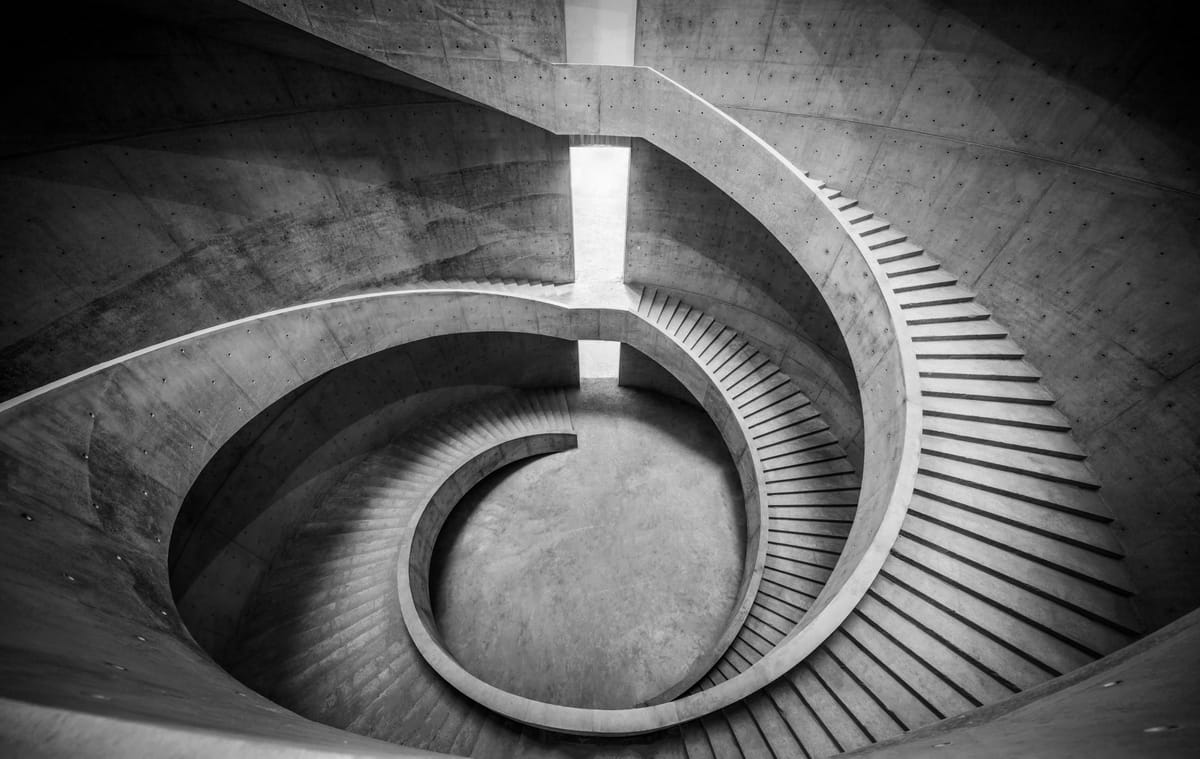
He Art Museum
6 Yixing Rd, Beijiao New Town, Shunde District, Foshan
The He Art Museum, a private nonprofit institution in Foshan, China, was founded in 2020 by business magnate He Jianfeng and designed by Japanese architect Tadao Ando. It focuses on modern and contemporary art, with a particular emphasis on the development of modern art in southern China. With the He family collection as its foundation, the museum’s growing holdings range from Lingnan School ink painting—including pieces by Gao Qifeng and Gao Jianfu—to works by international artists such as Pablo Picasso and Alexander Calder. The 16,000-square-meter venue, half of which is dedicated to exhibition space, features Ando’s signature use of fair-faced gray concrete. Its cylindrical structure expands in concentric rings, with each successive floor cantilevering outward, contrasting with the square exterior courtyard and referencing the ancient Chinese cosmological belief in a round sky and square earth. Current exhibitions include Swedish artist Mamma Andersson’s solo show “A History Over and Over Again” and Gutai artist Takesada Matsutani’s “Flow of Shades.”
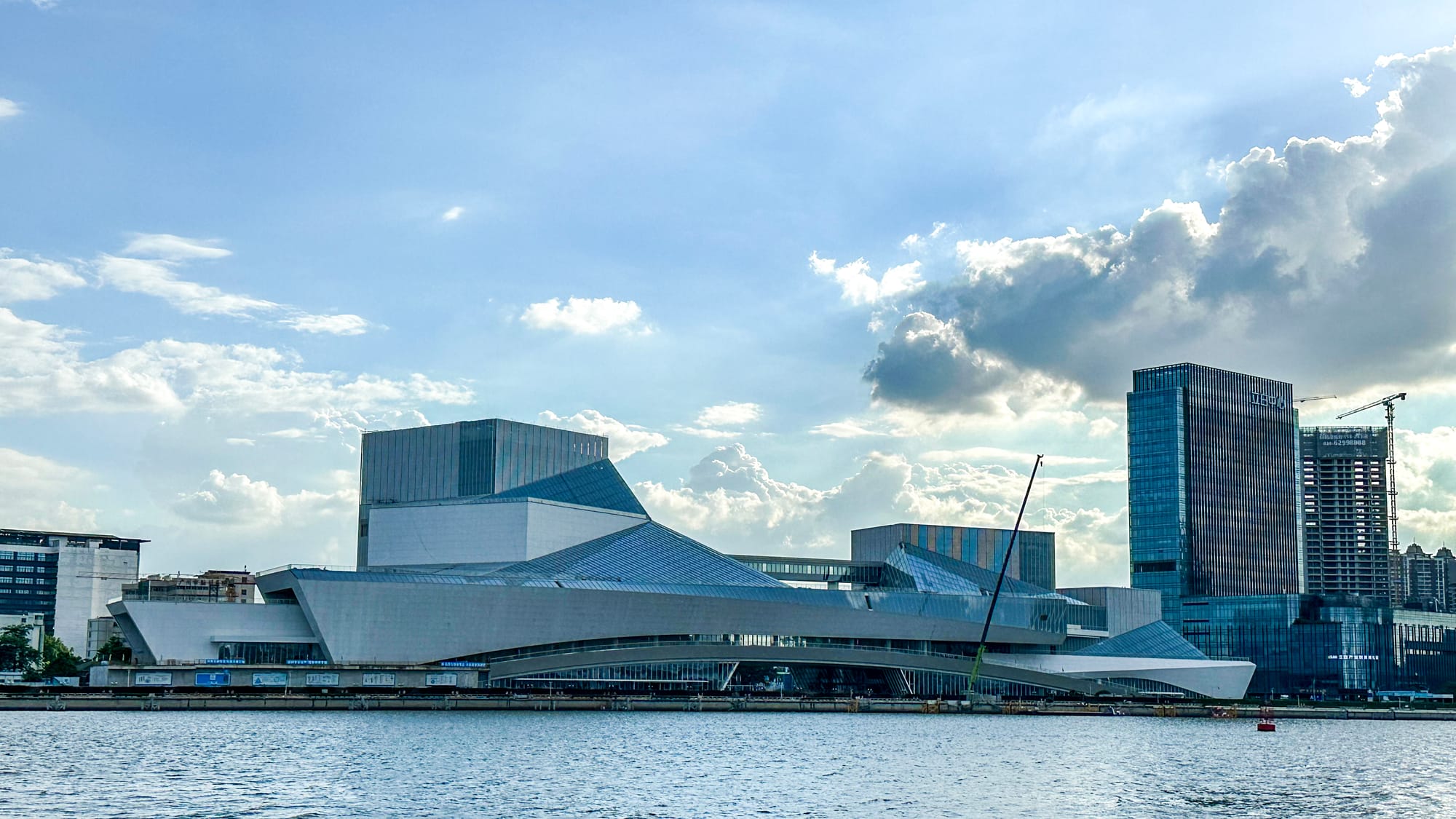
Bai’etan Greater Bay Area Art Center
19 Baietan South Road, Liwan District, Guangzhou
Nestled along Guangzhou’s Liwan waterfront, the Bai’etan Greater Bay Area Art Center is a government-funded cultural complex that opened in April 2024. Designed by architect He Jingtang and his team, the center resembles both a swan in repose and a ship setting sail. Spanning 145,000 square meters, with over 40,000 reserved for exhibitions, it comprises three major institutions: the new Bai’etan branch of the Guangdong Museum of Art, the Guangdong Intangible Cultural Heritage Museum, and the Guangdong Literature Museum. Housing 21 exhibition halls, the Bai’etan branch focuses on contemporary and international art. The Heritage Museum showcases national and provincial intangible cultural heritage, while the Literature Museum presents highlights of modern Chinese literature through rare manuscripts, vintage photographs, and immersive digital displays.
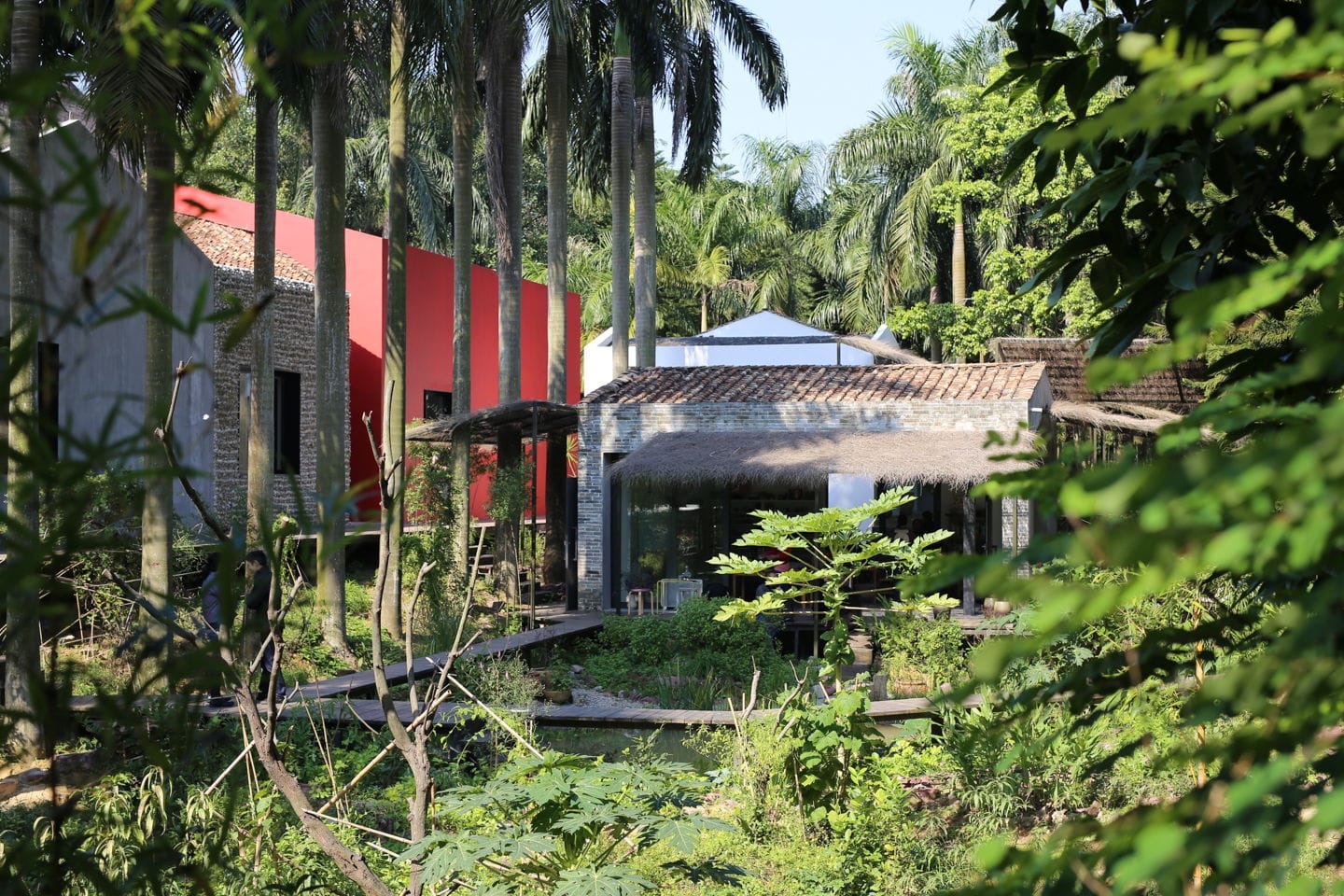
Vitamin Creative Space
Mirrored Gardens, Si Hai Ma Shu Hualong Agriculture Grand View Garden, Panyu District, Guangzhou
Tucked within greenery on the outskirts of Guangzhou, Vitamin Creative Space was founded in 2002 by curators Zhang Wei and Hu Fang, and has since navigated a dual role as both an independent art space and a commercial gallery. Since 2014, the space has incorporated Mirrored Gardens, an architectural project spearheaded by Sou Fujimoto Architects, into its operations. Once a forgotten plot where vegetation withered, the site has become an oasis where art and nature co-exist in tranquility, and the pace of contemporary life gently slows. The gallery currently represents 25 emerging and established artists, including mainland Chinese figures such as Cao Fei, Duan Jianyu, and Zheng Guogu, Hong Kong-based artists Lee Kit and Pak Sheung Chuen, and international names like Danh Võ and Koki Tanaka. The space is temporarily closed for summer break until September 24. After reopening, it will resume its current solo exhibition, “Photographic Journey” by Cao Fei, which reflects on millennial life and the evolving mediums of photography.
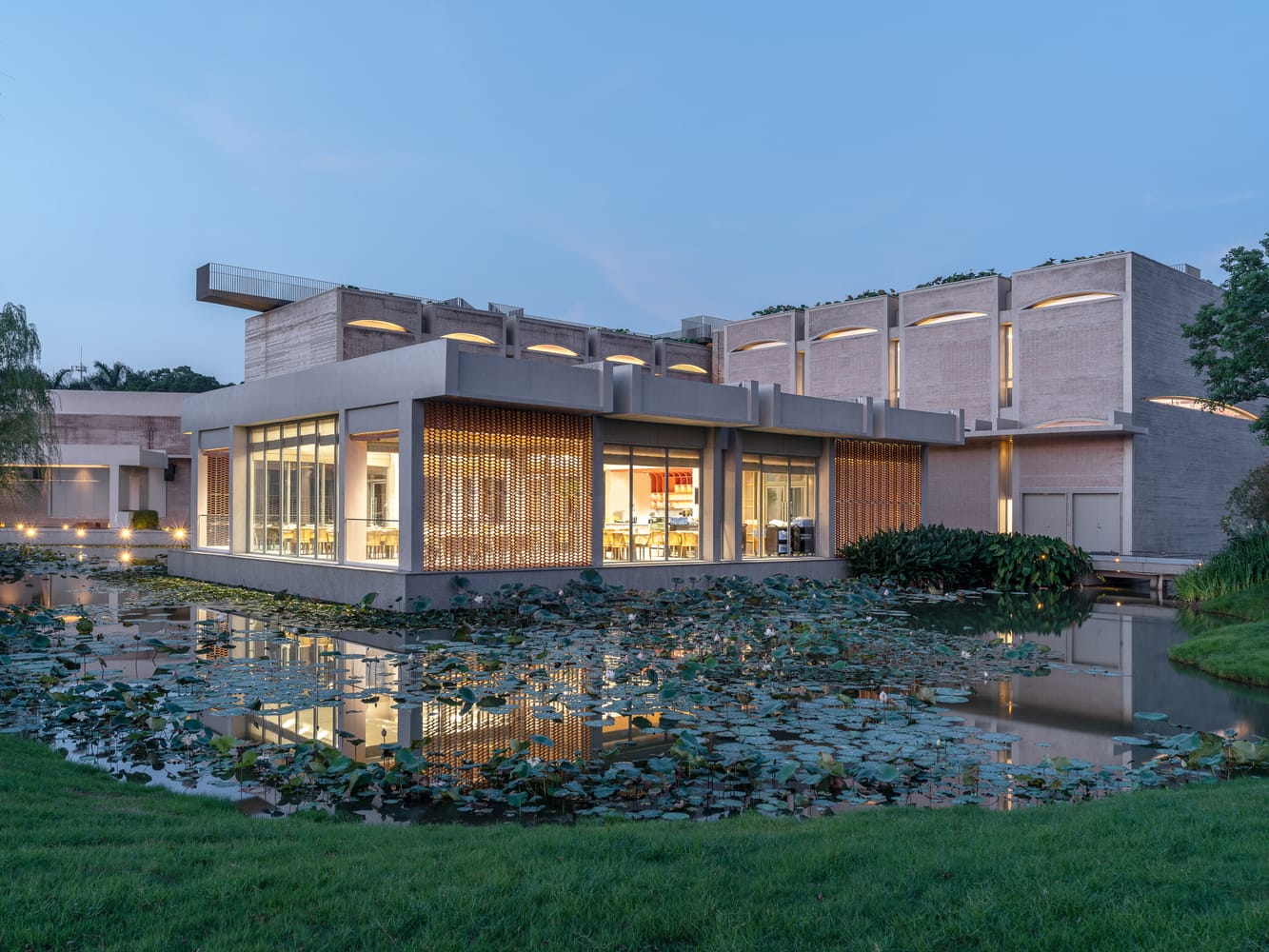
ChunYangTai Arts and Cultural Centre
Langtou Ancient Village, Tanbu Town, Huadu District, Guangzhou
The ChunYangTai Arts and Cultural Centre sits amid a lotus pond outside Langtou, a 600-year-old village in Guangzhou’s northern suburbs. Completed in 2023, it is part of the “Langtou Experiment,” an ancient village revitalization project led by architect Yung Ho Chang and supported by the Guangdong Vipshop Philanthropic Foundation, a private nonprofit organization. Designed in harmony with the village’s urban fabric, the center comprises 10 separate, small-scale structures housing exhibition spaces, research studios, a library, a theater, and a cafe. Constructed from local red tiles and grey bricks, and adorned with crescent-shaped windows adapted from Lingnan architecture, it weaves together modernist design and regional heritage. Notable exhibitions include “Figure as Monument: Giacometti in Langtou” (2024–25), which showcased 79 works by Alberto Giacometti in celebration of the 60th anniversary of Sino-French diplomatic relations. The current program includes “You Mao: the Art between Presence and Absence,” a solo exhibition of paper-cut works by Chen Fenwan.
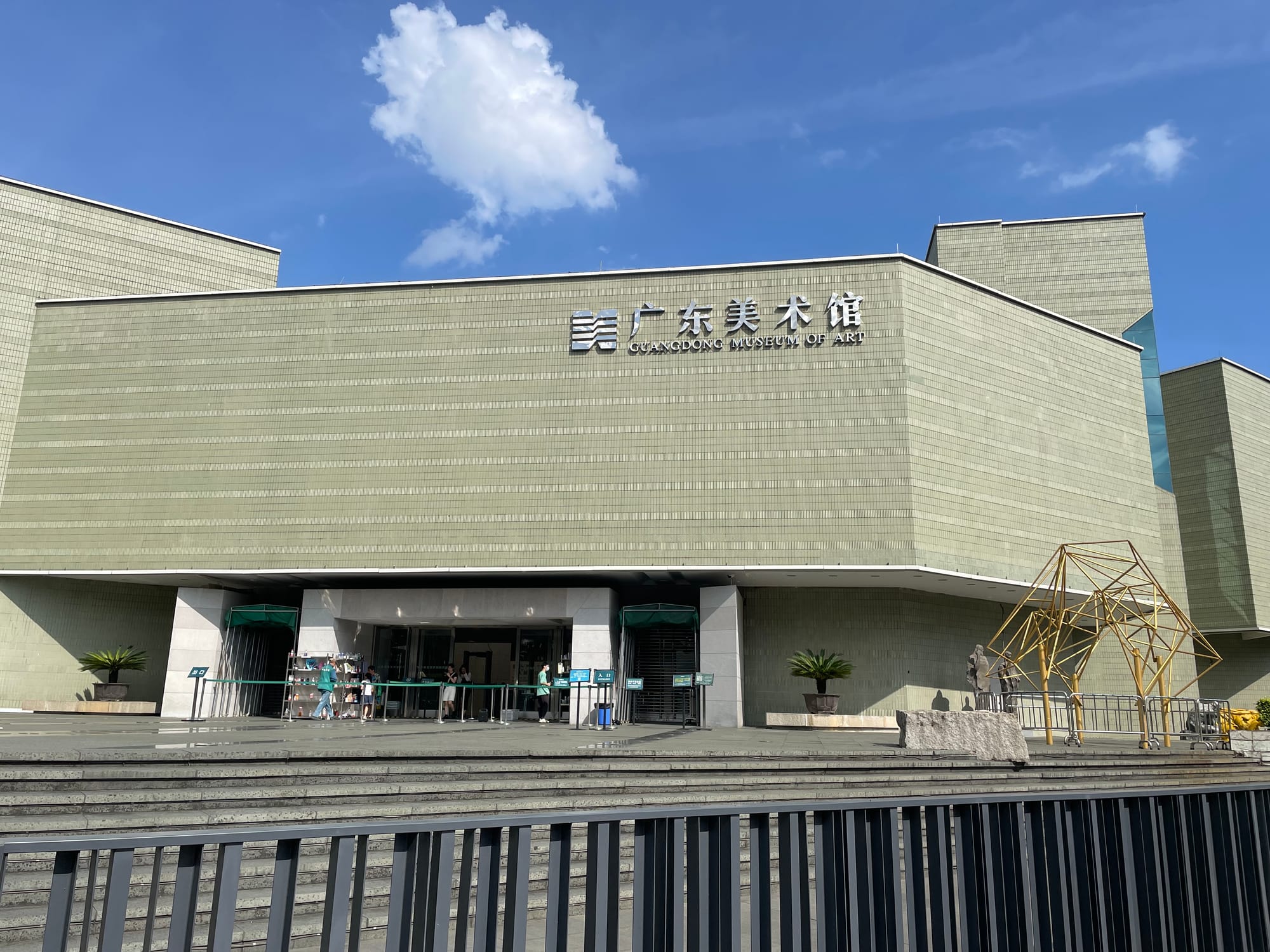
Guangdong Museum of Art
Baietan Area: 19 Baietan South Road, Liwan District, Guangzhou
Ersha Island: 38 Yanyu Road, Ersha Island, Yuexiu District, Guangzhou
Established in 1997 by the Guangdong provincial government, the Guangdong Museum of Art was one of the first designated major national art museums. In 2020, the museum expanded from its original home on Ersha Island to include a second venue in Bai’etan. Its collection of over 40,000 works spans five core areas: Guangdong art, modern Chinese art, contemporary art, art by overseas Chinese and international artists, and art literature. The Bai’etan branch, with a focus on contemporary and international programming, currently presents “Botero in Guangzhou,” a retrospective of Latin American artist Fernando Botero; “Beyond Concept and Matter” by French conceptual artist Bernar Venet; and “The Light of Hope,” a survey of modern abstract art pioneer Hsiao Chin. Meanwhile, the Ersha Island venue continues to foreground regional art histories, and is currently debuting a joint collection exhibition that traces ink art practices from Lingnan masters to contemporary experimentation.
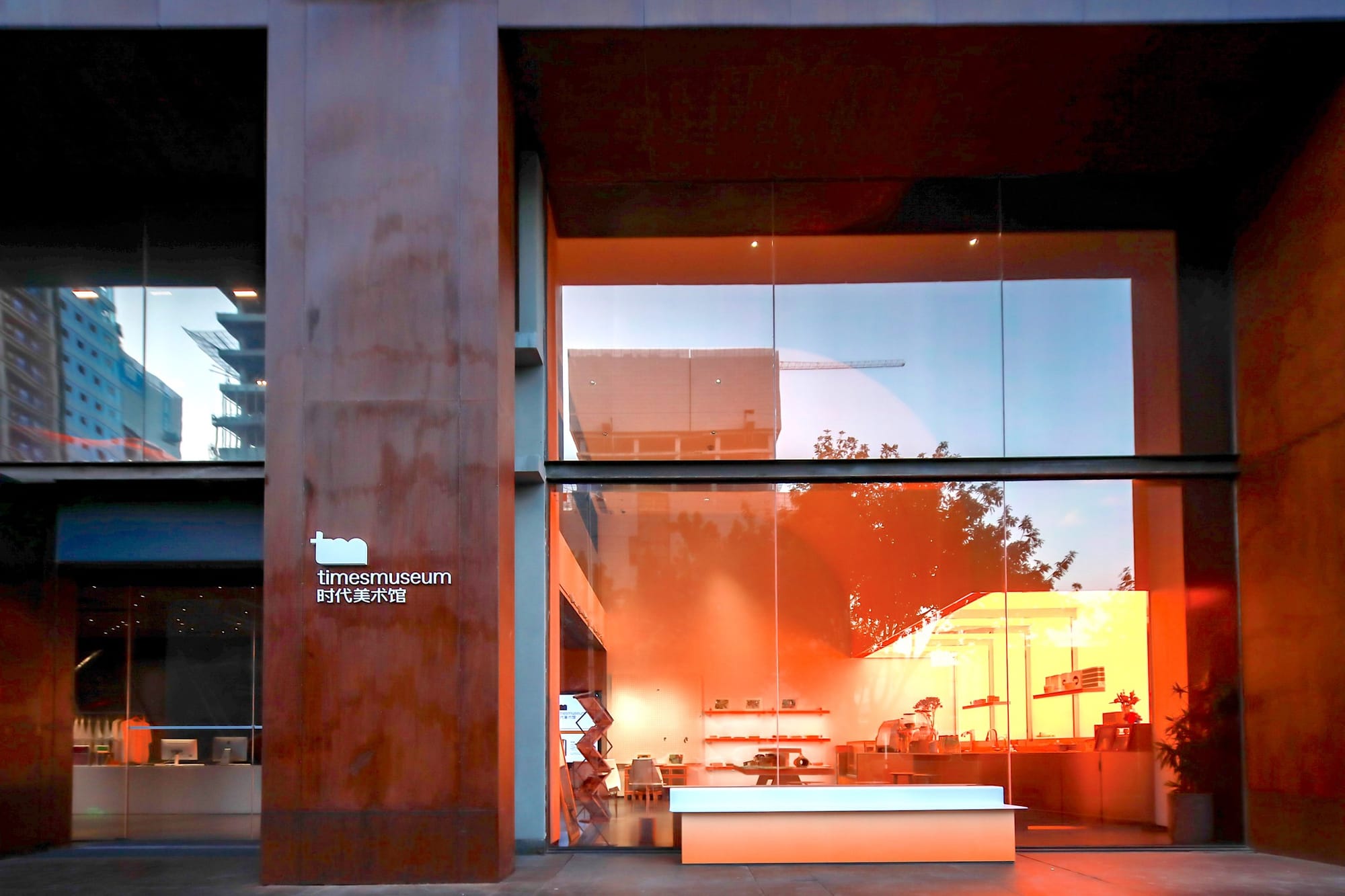
Guangdong Times Museum
Times Rose Garden Phase III, Huangbian North Road, N. Baiyun Avenue, Guangzhou
The Guangdong Times Museum, founded in 2010 with support from real estate developer Times China, is an independent, nonprofit private art institution committed to supporting regional artists. It has shaped China’s contemporary art landscape through landmark exhibitions such as “Big Tail Elephants: One Hour, No Room, Five Shows” (2016), a retrospective of the seminal Guangzhou artist group active in southern China’s 1990s cultural scene. In 2018, the museum became the first Chinese art institution to expand internationally with the opening of Times Art Center Berlin. Operations were temporarily suspended in 2022 due to funding cuts during China’s economic downturn, but resumed in March 2024, enabled by a fundraising auction of artist-donated works. Current exhibitions include “Floating World,” featuring three collaborative projects by multidisciplinary artists Tang Kwong San and Yuen Nga Chi from Hong Kong; “Magic Atlas,” a solo exhibition by Beijing-based artist Sun Xun centered on his feature-length animated film; and "Photographic Geomancy: Image, Fieldwork, and the Poetics of Geography,” a group exhibition probing Chinese image-making in relation to geography and ecological inquiry.
Stella Wu is an editorial intern at ArtAsiaPacific.
